South Sudan has been embroiled in a bitter civil war for six out of the eight years it’s existed as an independent country. Spurred on by power struggles between the nation’s leaders, the South Sudan conflict came to a head in 2013 when unresolved tensions between ethnic groups erupted into fighting that spread all over the country.
The reasons for war are complex and many, and oftentimes it’s difficult to comprehend why a peace agreement is so hard to come by in the aftermath of so much suffering. What’s clear about the South Sudanese civil war is that children are among the least protected demographic and yet, they have suffered the most due to circumstances beyond their control. Let’s take a look at the most frequently asked questions about this conflict.
- What is happening in South Sudan?
- What caused the South Sudan conflict?
- How is the conflict affecting children?
- Is there hope for peace in South Sudan?
- What kind of aid is Canada giving to South Sudan?
- What is World Vision Canada doing to help?
- How can I help the people of South Sudan?
Help vulnerable children in South Sudan
1. What is happening in South Sudan?
South Sudan gained its independence in 2011, six years after the Second Sudanese Civil War ended, to become the world’s newest country. The young nation’s tenuous hold on peace snapped in 2013 when President Salva Kiir Mayardit accused then-Vice President Riek Machar of plotting to overthrow him, embroiling the country in an intense civil war that pitted millions of civilians between government forces and rebel factions.
The South Sudanese civil war created a multitude of crises, including violent clashes between ethnic groups, the collapse of civic infrastructures, political instability,
famine and food insecurity, and many human rights violations. Life became increasingly and dangerously unbearable in South Sudan, driving
2.27 million refugees to neighbouring countries like Uganda, while another 1.87 million people became internally displaced.
The signing of a
power-sharing agreement between the warring factions in 2018 raised hopes for peace in South Sudan but did little to reverse the effect that years of political and tribal conflict, violence and destroyed livelihoods has had on the country.
Seven million people continue to be in dire need of humanitarian aid and protection.
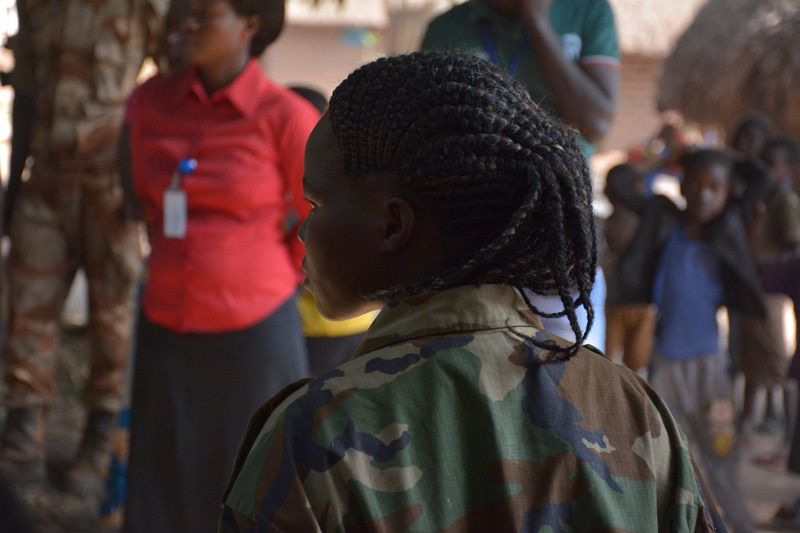 Agnes was released in February 2018, after 3 years as a child soldier in South Sudan. She is currently receiving counseling from World Vision case workers and support to rebuild her life. Photo: Mark Nonkes
Agnes was released in February 2018, after 3 years as a child soldier in South Sudan. She is currently receiving counseling from World Vision case workers and support to rebuild her life. Photo: Mark Nonkes
Below is a timeline of key events that led up to the South Sudan conflict and where it stands today.
2011—After decades of civil war in Sudan, the southern region gained its independence on July 9 and officially became known as South Sudan.
2012—South Sudan and Sudan fought over the oil-rich region of Abyei in the first half of the year. A peace deal in June helped South Sudan’s oil exports resume and created a 10-kilometre-long demilitarized zone along the border.
2013—Political in-fighting ensued when
President Kiir fired the cabinet and accused Vice President Riek Machar of planning a coup. The South Sudan civil war broke out as Ugandan troops tried to intervene for the government.
2014—Ceasefires and peace talks dragged on throughout the year. By April, over one million civilians were displaced, and hundreds killed when rebel forces sacked Bentiu, a town known for its rich oil reserves.
2015—President Kiir signed a peace agreement in August, under pressure from the international community.
2016—In April, Machar returned to the capital city of Juba to be sworn in as first vice president under the new unity government. By July, Machar was once again fired and forced back into exile. In December, President Kiir denied accusations from the UN Human Rights Commission of
ethnic cleansing in areas of South Sudan.
2017—In February, parts of South Sudan faced famine as a result of economic collapse and civil war. A unilateral ceasefire was declared by President Kiir in May, once again fueling hopes of peace. The number of South Sudanese refugees fleeing to Uganda passed one million in August.
2018—In a bid to end the war, a power-sharing agreement was signed by President Kiir and opposition leader Riek Machar in August, which saw Machar return to his previous role as vice president.
2019—Clashes continued to break out in January between the South Sudanese army and the rebel group National Salvation Front (NAS), which did not sign the 2018 peace agreement. Over
8,000 civilians were displaced and approximately 5,000 people, mostly women, children and the elderly, fled on foot to neighbouring Democratic Republic of Congo.
2. What caused the South Sudan conflict?
While it’s easy to see the political rivalry between Kiir and Machar as the catalyst for the South Sudan crisis, there are other factors that continue to drive and compound the war.
A devastated economy
The destruction of oil processing plants during the South Sudan war has impacted the country’s ability to keep its economy afloat. Matters were only made worse by the government’s decision to shut down national oil production—the source of 98 per cent of their income—which directly affected Sudan, who also had a stake in the fight for oil in the region.
Lack of unity within the army
Rather than a single, organized unit loyal to the government, the South Sudanese army is organized into
ethnically-based militias. Naturally, when the fighting turned to all-out war, soldiers and civilians alike looked to their own ethnic groups for protection.
Ethnic violence
A majority of the Dinka tribe—South Sudan’s
largest ethnic group—supports President Kiir who is himself a Dinka, while his primary opponent, Machar, belongs to the Nuer people, the second largest ethnic group in South Sudan. As fighting continued to spread to other parts of the country, ethnic groups with historical grievances against the Dinka
were also drawn into the current conflict.
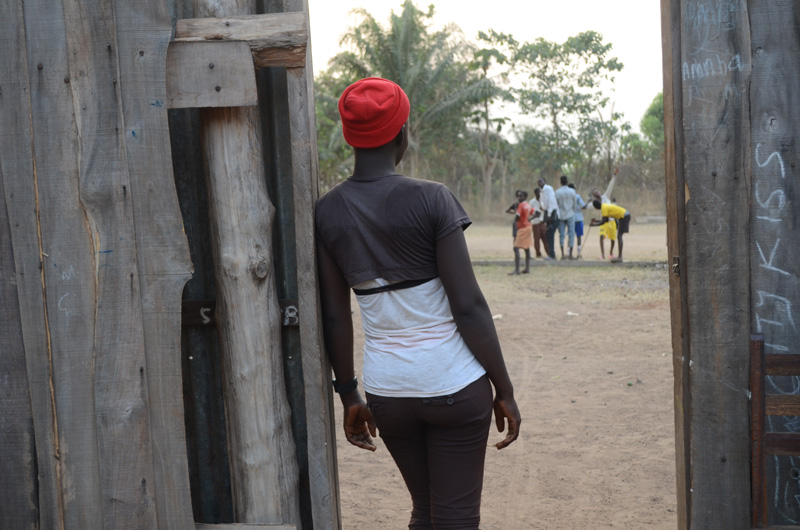 Mary* was captured by one of the groups involved in South Sudan’s conflict. She remained there for seven months. Now, she is receiving support through World Vision’s program to provide children involved in armed conflict. Photo: Mark Nonkes
Creation of new states
Mary* was captured by one of the groups involved in South Sudan’s conflict. She remained there for seven months. Now, she is receiving support through World Vision’s program to provide children involved in armed conflict. Photo: Mark Nonkes
Creation of new states
In January 2017, South Sudan went from 28 states to 32 following a decree from President Kiir. Opposition groups criticized the move as a way for the Dinka to usurp control of fertile lands that didn’t belong to them and called it a
violation of the transitional constitution.
3. How is the conflict affecting children?
Everyone suffers during and in the aftermath of natural and man-made disasters. But children tend to be the most vulnerable and therefore, often suffer the most. Caught up in the conflict, confusion and violence, South Sudanese children suffer unimaginably from the multiple and often simultaneously occurring humanitarian crises of the civil war. Following are some of the human rights violations they face in their daily struggle to stay alive.
Famine and food insecurity
In South Sudan and other parts of East Africa, violence and climate change are major contributors to localized famine and widespread food insecurity. After years of conflict in South Sudan, famine was declared in 2017 in the rebel-held areas of Unity State. The South Sudan famine affected approximately 100,000 men, women and children in that region alone. With 2018 being the worst year in food security on record for South Sudan, the World Health Organization estimates that over 5.7 million men, women and children will continue to experience a lack of food and livelihoods in 2019.
Lack of education
Many factors, including violence, economic instability and food shortage have made getting an education in South Sudan harder than ever before. The South Sudan conflict has resulted in many schools being unusable or destroyed, while teachers and other school personnel, fleeing from a combination of violence and economic hardship, are nowhere to be found. As a result, experts have found that five out of ten children are currently out of school and they predict that over 2.7 million girls and boys between three and 18 years old who live in war-torn areas will not have access to any level of schooling in 2019. And with 73 per cent of girls missing out on school, it’s no wonder that South Sudan was named as the toughest nation in the world for girls to receive an education.
Learn why girls around the world are missing out on this fundamental human right and how you can help turn this injustice around.
Displacement
From South Sudan, refugees flooded into neighbouring countries, hoping to escape from the effects of civil war, such as violence and other humanitarian crises. At the height of the crisis in 2017, over one million South Sudanese refugees found their way to Uganda’s Bidi Bidi refugee camp, making it the world’s largest refugee camp at the time. Orphaned children like Peter are often forced to make the frightening journey alone or with their siblings, surviving in the bush for weeks by scavenging for food and walking during the day to stay safe.
By 2018, almost 4.2 million people were displaced from South Sudan, including 2.2 million refugees in other countries and nearly 2 million who were internally displaced. Learn more about the plight of refugees around the world and what you can do to help.
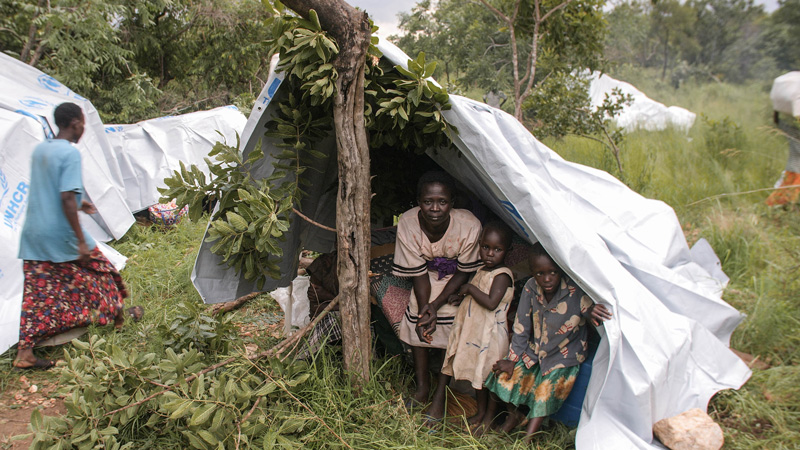 Children are one of the most vulnerable groups as they are forced to leave their homes due to conflict. Photo: World Vision
Children are one of the most vulnerable groups as they are forced to leave their homes due to conflict. Photo: World Vision
Sexual exploitation and violence
The accounts of sexual violence in South Sudan are brutal and difficult to hear. According to humanitarian agencies, there were 2,300 cases of rape targeting women and girls in 2018. Of these cases,
- more than 20 per cent were children,
- 125 women and girls were raped as they walked to emergency food distribution centres set up by international aid agencies, and
- at least 134 women and girls were raped between September and December, including some as young as eight. Almost 90 per cent of them were gang raped.
Sexual violence in South Sudan is so pervasive that more than 65 per cent of women and girls have reportedly experienced it at least once in their lives—therefore, mothers are teaching their daughters “safer” ways to minimize the violence to survive their rape. Although government officials claimed that raping women was against their culture, it’s clear that the practice has become so normalized that it goes vastly underreported.
Health
Access to health care is practically non-existent for people living in remote areas of South Sudan. Even those who were spared from much of the violence from the war find it hard to get medical treatment.
Children under five are the most vulnerable to preventable illnesses like malaria, cholera and measles, which are prevalent in South Sudan due to poor nutrition and low levels of immunity and immunization coverage. Two out of five South Sudanese children are malnourished. Other at-risk groups are women who are pregnant or lactating, the elderly and people living with HIV/AIDS and tuberculosis.
Experts estimate that nearly 4.5 million South Sudanese will face inadequate access to health care in 2019 and that the following conditions will exacerbate existing challenges within the current health care system:
- Lack of access to clean water
- Infection prevention and control measures
- Health care waste management
- Extensive malnutrition
- Threat of viral hemorrhagic diseases like Ebola
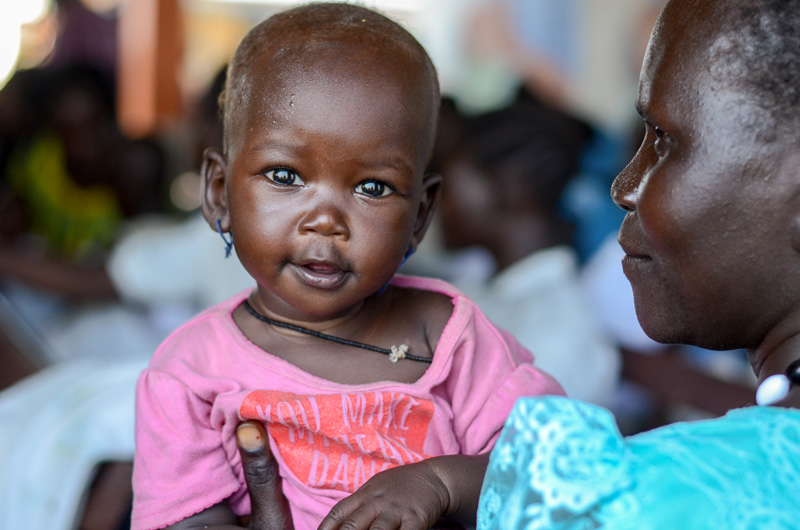 Children under five are the most vulnerable to preventable illnesses like malaria, cholera and measles. Photo: Mark Nonkes
Children under five are the most vulnerable to preventable illnesses like malaria, cholera and measles. Photo: Mark Nonkes
Violence against the fragile health care system, including its workers, is another roadblock to adequate health care in South Sudan. Doctors Without Borders strongly condemned an armed robbery at one of their clinics in Pibor, the second such incident in the span of just over a year. In the early morning hours of July 13, 2017, up to ten unidentified men broke into the facility and stole office equipment like phones and computers, injuring two staff members and threatening other team members with guns.
But this wasn’t an isolated incident. Around 500 attacks on health care services, including the deaths of 115 health care workers, were reported in 2018.
Child soldiers
Child soldiers in Africa can be found in Central African Republic, Democratic Republic of Congo, Nigeria, Somalia, and of course, South Sudan.
As of October 2018, 19,000 children were reportedly still involved in the South Sudan civil war as child soldiers, a claim that the South Sudan’s People Defense Force vehemently denied. It’s a sentiment shared by another group, the National Liberation Movement, which stated that they did not force any children to join their army; rather, it was the current situation that brought children and the army together.
Between October 2014 and June 2018, the UN found that 6,500 children were recruited by both sides of the war and were subjected to many forms of abuses like abductions, killing, maiming and sexual abuse.
No one is safe from forced recruitment, not even children as young as ten years old. And, in a country where many girls don’t have access to basic rights like nutritious food, proper education and personal safety, it’s ironic that the one place they’re not excluded from is the army. Of the 934 child soldiers in South Sudan who were released in 2018, almost 30 per cent were girls.
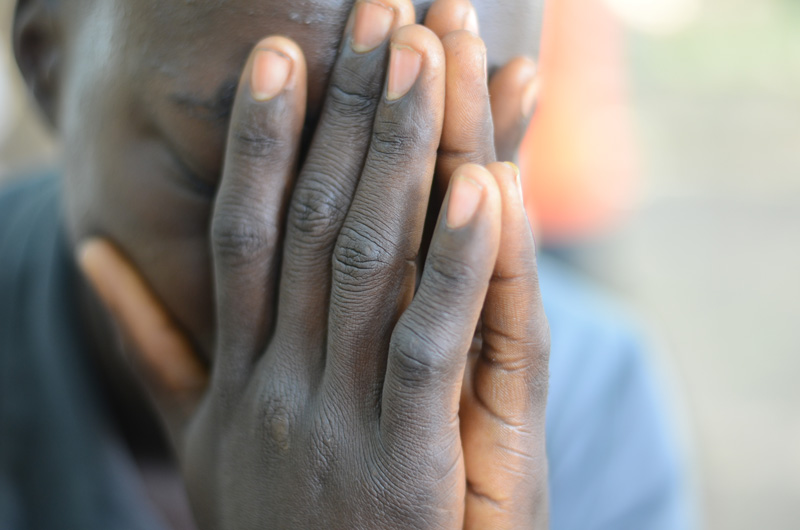 Seventeen-year-old Jones is one of 700 children in South Sudan who is part of a World Vision run reunification and reintegration programme for children formerly associated with armed groups. Photo: Mark Nonkes
Seventeen-year-old Jones is one of 700 children in South Sudan who is part of a World Vision run reunification and reintegration programme for children formerly associated with armed groups. Photo: Mark Nonkes
Around the world, including South Sudan, child soldiers are being released back into society thanks to mounting international pressure. But, still, experts say that the number of recruitments keep rising in war-torn countries, like Iraq, Yemen and South Sudan, where the challenge is not just disarming child soldiers but keeping them disarmed. Many former child soldiers suffer from mental health illnesses, such as post-traumatic stress disorder, depression, flashbacks and general discomfort at resuming their daily lives.
Get an in-depth look at the plight of child soldiers in South Sudan and what we’re doing to fight against this injustice.
4. Is there hope for peace in South Sudan?
While the South Sudan conflict is still ongoing, albeit less intensely, power-sharing and ceasefire agreements signed on August 5, 2018 give hope that real and lasting peace will one day be restored. Under the new agreement, Riek Machar can return to South Sudan to serve as one of five vice presidents under President Salva Kiir in a three-year transitional government of national unity, to be formed within three months of the final peace deal signing—the date of which has still not been set.
The agreement calls for a cabinet made up of 35 ministers from the ruling government party, the main opposition party and other opposition groups. The legislative assembly will consist of 332 lawmakers from the government and 123 from the opposition.
Although South Sudan is closer than ever before at putting an end to the civil war, there’s still a lot of mistrust between Kiir and Machar, which could easily reignite the feud. And while the new agreement brings a tentative hope for a peaceful future, there are those who believe that there are a lot of questions it still doesn’t answer. Nor does it address the many political and security issues that led to the start of the conflict in 2013.
But with people tired of the war and the immense suffering it caused, perhaps a more concerted effort will be made by all parties to finally make peace a reality in South Sudan.
5. What kind of aid is Canada giving to South Sudan?
In 2017, the government of Canada gave $32.5 million USD in financial aid for South Sudan, and supported NGOs like the World Food Programme, World Vision, CARE Canada, Oxfam and Journalists for Human Rights. According to UN’s Financial Tracking Service, Canada’s contribution in 2018 was slightly higher, at $32.8 million USD. Those funds helped address the great humanitarian needs in South Sudan, like the provision of health care services and essential medicine for refugee camps and clinics; schools, textbooks and teachers; and clean drinking water.
6. What is World Vision Canada doing to help?
At World Vision Canada, we believe that all children deserve to experience life in all its fullness—even in fragile contexts like South Sudan. We turn our outrage at the injustices the children of South Sudan face into action for good.
Some of the highlights of World Vision Canada’s work in South Sudan include:
- 2,238 malnourished children were enrolled in nutritional programs and monitored to ensure they are growing healthy
- 40,394 children and adults learned about the importance of water safety, proper sanitation and hygiene to stay healthy
- 12,000 individuals including children have safe water for drinking and cooking thanks to new or repaired water sources
- 204 latrines in homes, schools or the community are providing improved access to sanitation for children and families
- 45,597 farmers received livestock, seeds or tools to improve productivity and better provide for their children and families
- 1,142 children and adults received nutritious fruits and vegetables grown in community, school or family gardens
- 4,900 people received daily essentials like shelter, cooking sets and hygiene kits, protecting families during emergencies.
Learn more about the full scope of our work in South Sudan.
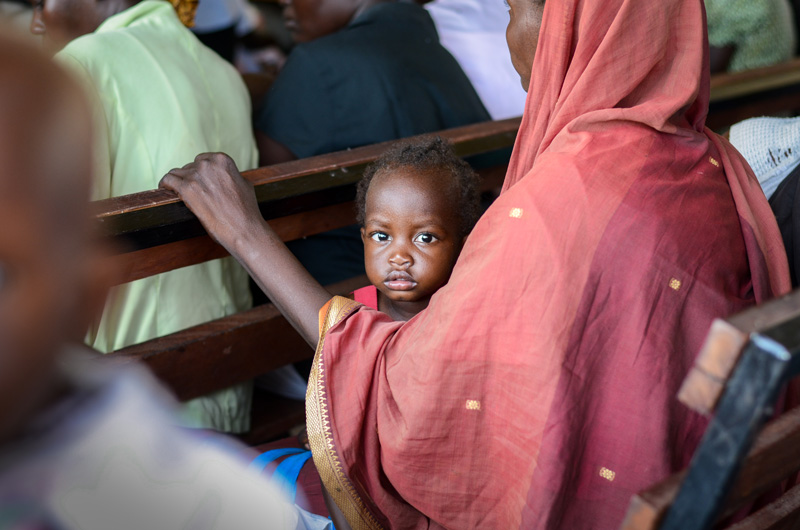 Sabrina is 13 months old and attending a health centre where World Vision is implementing a nutrition programme in South Sudan. Photo: Mark Nonkes
Sabrina is 13 months old and attending a health centre where World Vision is implementing a nutrition programme in South Sudan. Photo: Mark Nonkes
7. How can I help the people of South Sudan?
You cannot sponsor a child in South Sudan—but you can still help.
Our Raw Hope initiative works in unstable countries whose governments don't protect the rights of its people. Your Raw Hope donation ensures we are able to help in unstable situations like South Sudan to bring immediate relief and also work toward long-term solutions.
Whether you choose to give once or make it a monthly donation, your gift will provide things like clean water, education, food, health care and shelter in South Sudan and other dangerous countries. Here’s an update from World Vision South Sudan staff about how programs funded by Raw Hope donors helped farmers learn effective farming techniques to improve productivity and better provide for their children and families.